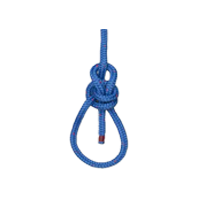Running Bowline Tying
Pass the rope over the pole. Form a loop in the tail. Pass the short end round the standing end, through the loop, around itself, and back through the loop to form the bowline. Pull on the standing end to run the bowline up against the pole.
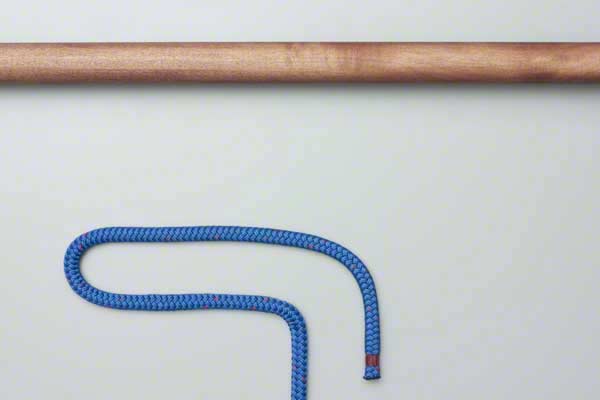
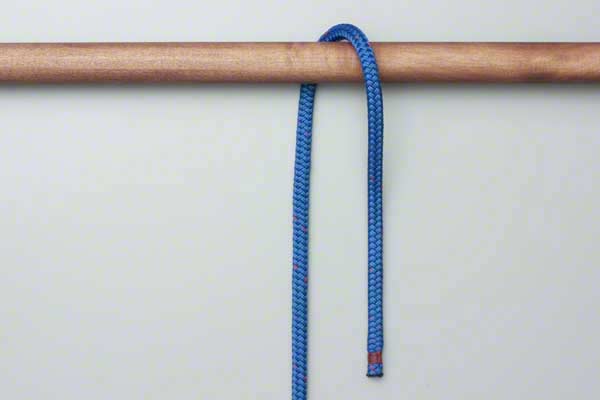
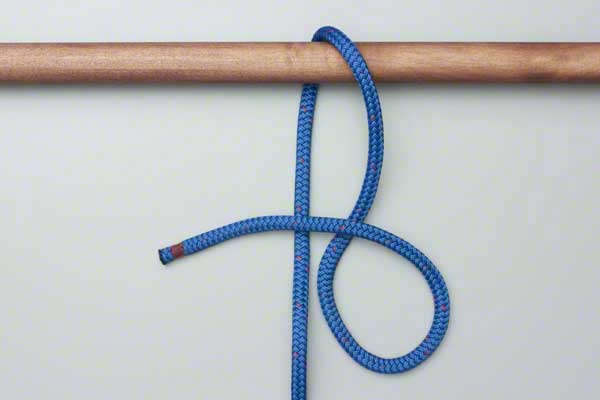

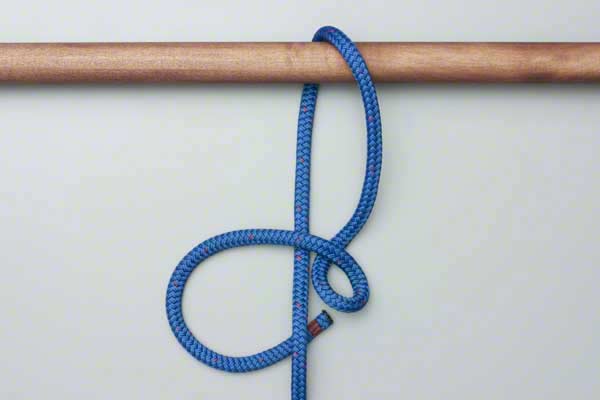
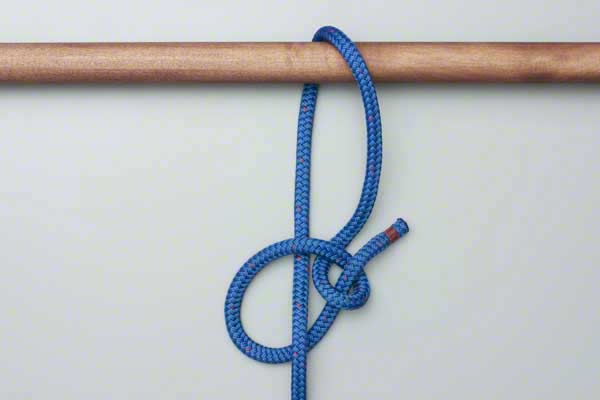
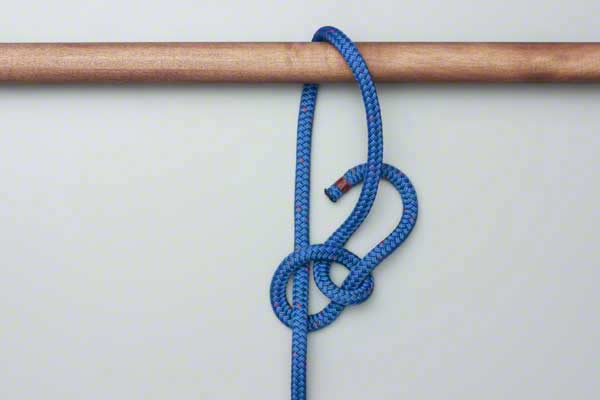
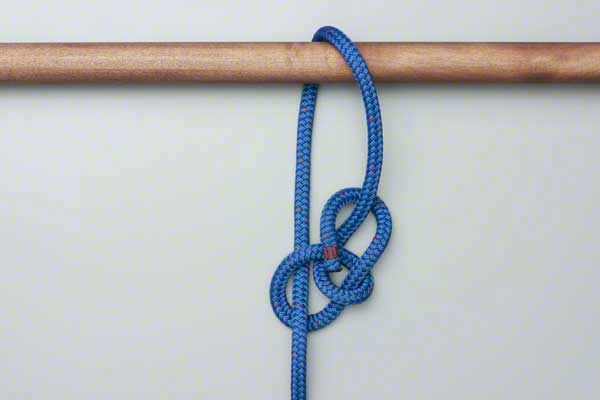
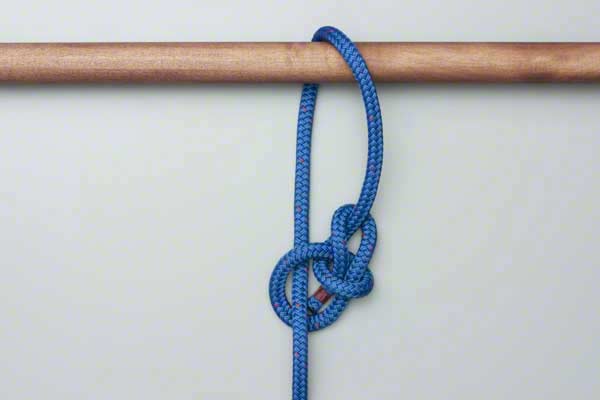
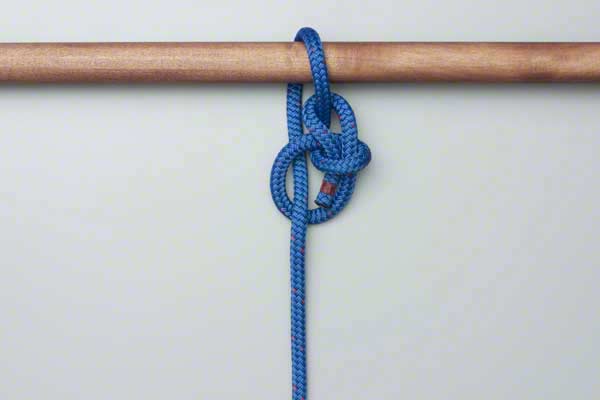
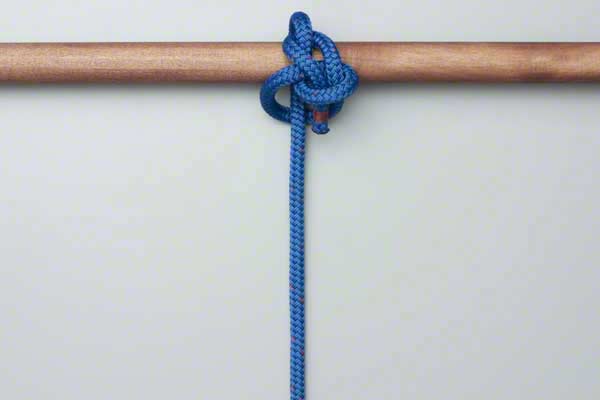
Running Bowline Details
Uses: The Running Bowline (ABOK # 1117, p 204) is a valuable way of tying a type of noose which will not bind and can be slid undone easily. In boating it is recommended for use when retrieving lumber or rigging which has fallen overboard and in climbing for retrieving objects in places such as crevasses. At home it is useful to hang a Child's Swing. The first challenge is to find a suitable branch and the second is to successfully throw the rope over it.
Options: When the Standing End is available, it is often easier to first tie the Bowline and then thread the Standing End through it.
Retrieval: Once the knot is snug up against the branch, retrieval later can be a problem. The knot may be twenty feet in the air and you have neither intrepid rope climbers nor long ladders. Advance planning provides options: either a light retrievable line attached to the bowline or a very long tail to the bowline. However, if the long end option is considered, the Alpine Butterfly Loop would be better because it requires no threading of a long end to tie it.
Alternatives: A similar running noose could be created with various loop knots - including the Noose itself. The advantage of using a knot like a bowline is that it will not close up and bind on the standing end. So long as the rope is under tension, the running bowline will grip its load - or the branch. When not loaded the knot can be easily undone.



